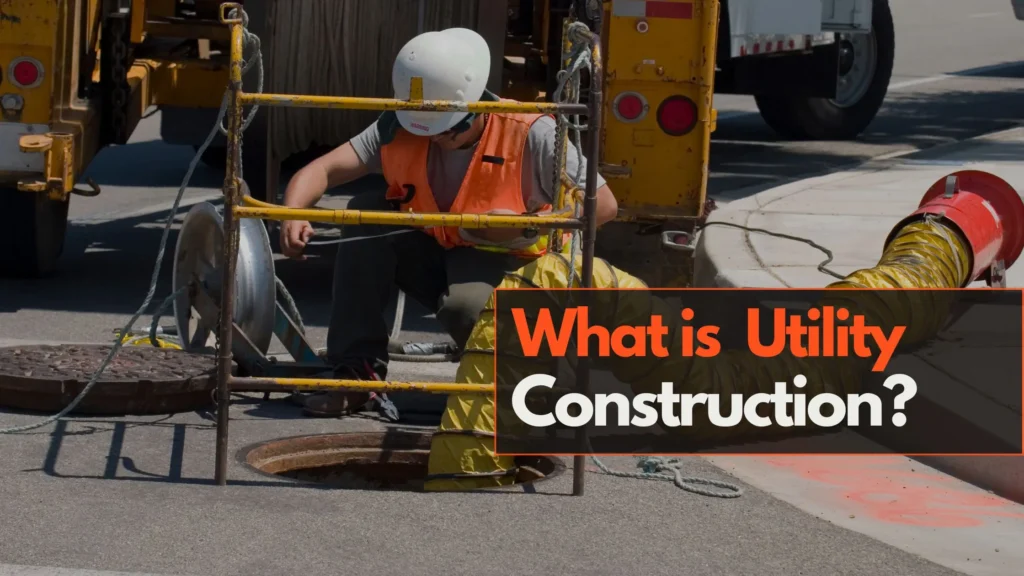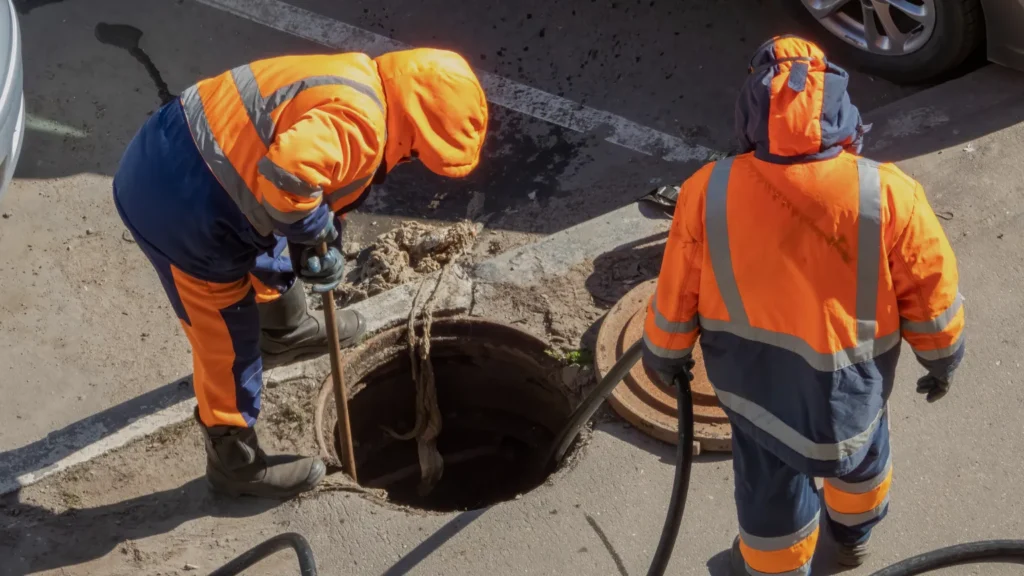What Is Utility Construction?

Utility construction forms the basis of modern infrastructure for building, installing, and maintaining necessary service networks such as electricity, water, gas pipelines, and telecommunications and supplying power to homes, businesses, and cities, providing the resources and connections to keep our lives running and businesses thriving—these emerging technologies in utility construction work on increasing urbanization and sustainability demands for the community.
To meet the increasing demands of urbanization and sustainability, precise estimation services are essential for efficient planning and successful execution of utility construction projects.
Components of Utility Construction
Utility construction includes most of the vital components of the workings of modern civilization daily:
Water Supply Systems
Installing water pipes, water-treatment plants, and reservoirs offers fresh water for drinking, cooking, and sanitary use in residential, commercial, and industrial operations.
Sewer and Drainage Systems:
These systems care for wastewater and flood prevention; thus, they promote health and environmental conservation since they help monitor wastes and leader controlling water-borne diseases.
Electrical infrastructure
Power grids, substations, and underground cables are mounted and put into operation to ensure a stable electricity supply. A substation monitors electricity distribution to local areas, and underground wires protect the electricity supply from untimely weather changes.
Gas Distribution Network
Gas pipelines supply fuel for heating, cooking, and industrial purposes. Once well installed and maintained, the gas lines ensure energy is transmitted effectively and safely.
Telecommunication
The digital backbone of modern economies is supported by networks for the Internet, mobile phones, and data transfer. Digital technologies and global connectivity have elevated utility construction to include refined telecom networks that improve the facilitation of communication.
Importance of Utility Construction
Utility construction would thus avoid disrupting essential services, boosting economic growth and improving public health and general quality of life.
Utility Construction Necessity

Utility construction would thus avoid disrupting essential services; it would help boost economic growth and improve public health and overall quality of life.
Assisting Daily Life
Utility infrastructure is an everyday accompaniment, as its existence guarantees, often without flaw, the availability of water, electricity, and communications networks to meet one’s needs. Consider a day without electricity, clean water, or internet flow; utility construction reduces events like these
Economic Development
An advanced utility network also attracts industries and businesses to the region, stimulating local economies. It also provides direct and indirect employment opportunities, contributing to regional and national growth. Investment and increased property values within these systems happen during the secure infrastructure network’s construction, maintenance, and operation.
Enhancing Public Health and Safety
Properly planned new sewage systems, clean water pipelines, and gas supply systems with proper safety avoid health crises in the public. Adequate electricity distribution and communication facilities also are prepared to face emergencies.
Sustainability
Applying renewable energy systems, non-polluting materials, and environment-friendly construction techniques reduces the negative impact on nature, besides meeting the challenges of climate change.
Environment Sustainability
Utility construction is more sustainable and, thus, significantly improving reduction in environmental impact. Utility construction is changing into a more green and sustainable form by encompassing green infrastructure, eco-friendly materials, energy efficiency, and restoration works.
Utility Construction Innovation
Several technological innovations and method changes transform utility construction into a more efficient, environmentally friendly, and resilient to future demands.
Smart Grid and Lot
Performance Monitoring and Resource Optimization In modern utility systems, IoT devices make performance monitoring, problem inciting, and optimal resource distribution possible. For instance, intelligent grids alter the power supply dynamically with demand and thus save on energy loss.
Trenchless Construction
Trenchless methods, such as micro tunneling and cured-in-place pipe (CIPP) repairs, allow utility installation and maintenance with minimal surface disruption. This is especially beneficial for projects in urban or environmentally sensitive areas.
AI and Automation
AI will enhance the construction of utilities through predictive analytics, automation machinery and advancement in project management. All these will increase the discovery of risks, determine the best optimum schedules, and enhance decision-making.
Renewable Energy System
Renewable energy sources such as solar and wind power have become standard in utility projects to maintain control over greenhouse gases, hence sustainability.
Modular Construction
Off-site construction of prefabricated parts and on-site installation reduce construction times, waste generation, and improve quality.
Challenges and Solutions in The Construction of Utility
These problems are related to this sense. New solutions can be found about utility in upgrading utility infrastructure and maintenance operations to meet the demands of modern urban populations.
| Challenges | Solution |
| 1. Aging infrastructure: Outdated utility systems are prone to failure. High repair and replacement costs. Logistical complexity in upgrading old systems. |
1. Infrastructure modernization:Investing in modern materials such as corrosion-resistant pipes and high-capacity cables. It should include systems that resist extreme weather conditions to reduce further disruptions. |
| 2. Rapid urbanization: The growing demands for utilities are due to the ever-increasing population in towns and cities. Limited spaces in highly populated areas for construction Difficulty in upgrading infrastructure without disturbing existing systems. |
2. Trenchless technologies: Use technologies, like horizontal directional drilling, to install or repair underground utilities with minimal surface disruption. Operate in multi-story utility installations in tight urban areas |
| 3. Regulatory and permitting hurdles Lengthy and complicated permitting procedures. Inconsistency in local, state, and federal regulations. Delays in approvals tend to raise the length and cost of a project |
3. Streamlined regulation: Simplify regulatory procedures through cooperation among governments, utility companies, and contractors. Adopt digital platforms that streamline and speed up the permitting and approval processes. |
| 4. Environmental concerns:Construction activities disrupt local ecosystems and wildlife habitats. Pollution from construction materials and processes. Impact of land clearing, digging, and drilling on the environment. |
4. Eco-friendly material: Recyclable and sustainable construction material. Integrate bioswales, rain gardens, and permeable pavements to manage stormwater and improve urban ecosystems. Utilization of renewable sources of energy; reduction of losses in utility systems. |
| 5. Skilled workforce shortage: Lack of skilled labor, including engineers, technicians, and laborers. Increased difficulty in maintaining quality and safety. Project delays and increased costs due to workforce gaps. |
5. Workforce development: Invest in training programs, apprenticeships, and certifications. Collaborate between governments, industries, and educational institutions to create a skilled workforce pipeline. |
| 6. Digital transformation: Limited integration of intelligent technologies. Traditional methods slow down project planning, execution, and monitoring. Need to adapt to real-time data and insights for efficient decision-making. |
6. Smart technologies Implement IoT sensors, data analytics, and automated systems for real-time monitoring of utilities. Use advanced software for planning, design, and execution to improve efficiency and reduce delays. |
Conclusion
Utility construction forms a basis and helps create the infrastructure sustaining modern life. From clean water supplies to reliable power flow, it enables quality communications supporting day-to-day life. The industry leads innovation despite aging systems and regulatory hurdles, embracing sustainable practices and cutting-edge technologies in light of growing demand from an increasingly interdependent world. Utility construction will be critical in building a resilient and environmentally friendly future as urbanization becomes faster and environmental concerns increase.
